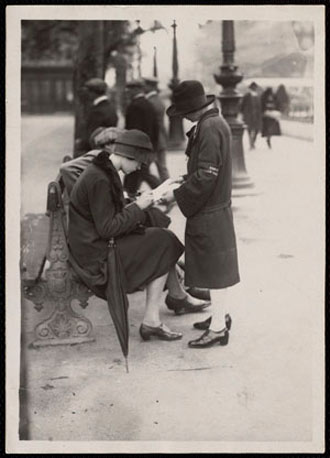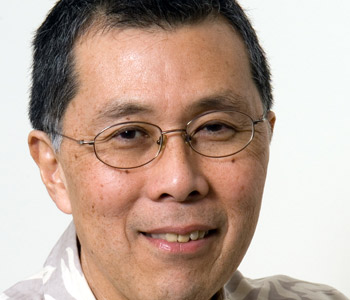Moshik Temkin
The Sacco-Vanzetti Affair: America on Trial
Yale University Press
344 pages, 9 x 6 inches
ISBN 978 0300124842
My book, as is probably obvious from its title, is a history of the Sacco-Vanzetti affair, which began in 1920 as a local criminal case in which two Italian-born resident aliens, Nicola Sacco and Bartolomeo Vanzetti, were arrested and tried in Massachusetts for the robbery and murder of a factory paymaster and his security guard in an industrial suburb of Boston, and which turned within a few years into an unprecedented international cause célèbre.
Because Sacco and Vanzetti were revolutionary anarchists as well as working-class immigrants, because the case against them seemed relatively weak, and because they impassionedly and eloquently insisted on their innocence, their case came to be seen by many, both in the United States and around the world, as an injustice that had its roots in the “Red Scare,” the anti-immigrant, anti-radical, and isolationalist sentiment and policies that swept the U.S. in the aftermath of World War I.
By 1927, even while languishing on death row in a dismal Massachusetts prison, they had become two of the most famous people in their world, on a par with Charles Lindbergh or Charlie Chaplin. In spite of—perhaps because of, the book suggests—the gamut of national and international support for their cause—including people as disparate and unlikely as H. G. Wells, Benito Mussolini, Henry Ford, Albert Einstein, Jane Addams, and Joseph Stalin—the two men were put to death by electrocution in August 1927.
There have been many books published about Sacco and Vanzetti over the years, but most of them have focused largely on their 1921 trial and on the perennial (and in my view, unanswerable) question of whether they were innocent or guilty of robbery and murder (the first question I am always asked is “So, did they do it?”). I tried to do something completely different, while trying also to capture a sense of the dramatis personae that helped make the story so flamboyant. Rather than write about Sacco and Vanzetti’s trial, I wanted to show how in essence it was the United States (and Massachusetts specifically) that came to be put on trial. The book shows how and why the shift from obscure case to worldwide affair took place, and what the affair meant, and still means, to Americans as well as non-Americans.
In one sense, The Sacco-Vanzetti Affair is about America’s changing relationship with the world. In another sense, it’s about how politics came to function in the modern era. Ultimately, I hope, the book tells a compelling story with some relevance for our own day.

I settled on the idea of writing about the Sacco-Vanzetti affair—as opposed to their case—because it represented a story of how American, European, and other international concerns intersected at a particularly combustible and fascinating moment in history.
The book started as an attempt on my part to combine my interests in modern American and European history. I was trained in both fields but didn’t want to write on just one or the other; I felt that the kind of historical issues I wanted to focus on were transatlantic in nature. I settled on the idea of writing about the Sacco-Vanzetti affair—as opposed to their case—because it represented a story of how American, European, and other international concerns intersected at a particularly combustible and fascinating moment in history.
The period after the First World War was marked by the rise of the United States to global power, while the European powers went into decline. At the same time, many Americans retreated in the wake of the war into an isolationalist, often virulently anti-foreigner mindset. Europeans, in turn, were increasingly nervous about American power and the way the United States wielded that power internationally as well as domestically. The central and dominating place of the United States in the world, a fact of life that we have been taking for granted for decades, was a new development back then, and I wanted to examine what kind of reactions and responses it triggered as it was unfolding. This was really a world in flux.
What I found in the course of my research was that the Sacco-Vanzetti affair came to symbolize a new (and to many, disturbing) transatlantic relationship. Sacco and Vanzetti, who were themselves Europeans, were seen by many other Europeans as stand-ins for all of Europe in a future America-dominated world. The Sacco-Vanzetti affair exploded the way it did partly because of this unique timing and political context, and I wanted to see how its ramifications, which were extensive on both sides of the Atlantic, differed from place to place, and also what they had in common.
When I first embarked on my research, around 2002, historians of the modern United States were beginning to talk at length about the need to study American history in global context. Particularly after the shocking events of 9/11, my cohort felt that more than ever we needed to examine the roots of how American power in the world has worked, and how people in the wider world have responded to and been impacted by it. But I found myself unsatisfied with the way many of these histories were being written. There were excellent new studies coming out every year about the ways in which America exerted its influence abroad. But I felt that the story would not be complete without looking closely at the ways in which Americans themselves responded to their country’s newfound international power.
In researching Americans’ involvement in the Sacco-Vanzetti affair, I found that one of the major catalysts for its becoming a critical issue domestically was the extent of protest and debate over the case abroad, particularly (but not only) in Europe and Latin America. Americans became divided not only over Sacco and Vanzetti’s guilt or innocence, but also over how to respond to the intervention of foreigners—even just the interest of foreigners—in supposedly internal American affairs.
In the end, foreign pressure on American authorities—which included everything from riots in the streets, peaceful demonstrations, angry editorials, respectable petitions, appeals from heads of states—both gave Sacco and Vanzetti their chance at clemency and sealed their fate. Ultimately, I concluded, the authorities in question, both at the state level and the national level, were not prepared to spare Sacco and Vanzetti’s lives and thus appear weak in the face of foreign “subversives” and radicals, or “terrorists,” as foreign protesters were often called.
In this sense, writing the history of the United States in the world means looking at the ways non-Americans responded to goings-on in the United States, and certainly at how their lives and societies were impacted by the spread of American power, but also, no less important, at the ways Americans themselves responded to these non-American responses to American power. I think that is where and how and why the Sacco-Vanzetti affair achieved its unique volume and drive.
A member of the French Comité Sacco-Vanzetti collects signatures for a petition to be sent to President Calvin Coolidge and Governor Alvan Fuller, Paris, May 1927. (Photo by Henri Manuel/Courtesy of the Trustees of Boston Public Library/Rare Books.)

The end of chapter 2, pages 95-100, just before the book’s gallery of photos, deals with one of the biggest questions I faced when doing the research: why, in fact, were Sacco and Vanzetti executed?
It was always assumed that the executions were just a follow-up to their convictions, and the two events, the conviction and the execution, were treated as almost one and the same. But six years passed between the time they were found guilty and the time they were led to the electric chair, and during that period a lot had happened—the entire context of the case had changed. Sacco and Vanzetti went from being anonymous anarchists who barely knew English to being international celebrities and, for some, even folk heroes (for others, they were dangerous terrorists, frauds, criminals, or all three). It wasn’t enough to say that they were executed because they had been found guilty; to execute them in 1927, at the height of the political storm that surrounded them, required a decision. I wanted to know how and why this decision was made.
In this part of the book I try to answer these questions by telling the story of Georg Branting, a Stockholm attorney who visited the United States in the Spring of 1927 to investigate the case on behalf of “European opinion.” After meeting with many of the protagonists of the story, including Sacco and Vanzetti, Branting became convinced that the men were innocent, as they claimed all along, and that, because of this, the authorities would stop their execution. When that didn’t happen, he came to the grim conclusion that the international pressure exerted on the United States by Europeans, Latin Americans, and others around the world made many Americans in positions of power worry about appearing weak to the rest of the world. This was especially true of Massachusetts Governor Alvan Fuller, a man with presidential aspirations, who appointed a special advisory commission led by Harvard University President A. Lawrence Lowell, but who chose, at the moment of truth, not to pardon Sacco and Vanzetti. They were executed, in other words, for the same reason they became famous.
This is part of why I argue in the book that, as opposed to what high school and college students read in their history textbooks, Sacco and Vanzetti were executed not in spite of the global protest but rather because of it. In this sense, I think the affair revealed a powerful division among Americans between those who viewed the U.S. as part of an international community, and those who insisted on its principled separateness from the rest of the world. Ironically, by the way, Fuller lost his political gamble, because the Republican Party, fearing to make the Sacco-Vanzetti case an issue in the 1928 presidential election, essentially sidelined him. By 1928 Fuller was out of politics and back at his business, selling automobiles.

I settled on the idea of writing about the Sacco-Vanzetti affair—as opposed to their case—because it represented a story of how American, European, and other international concerns intersected at a particularly combustible and fascinating moment in history.
Sacco and Vanzetti left a number of odd legacies. A lot of people in the United States, Europe, and Latin America still recognize their names. I’ve seen or heard them mentioned in The Sopranos and Sports Illustrated, in novels by Kurt Vonnegut and Phillip Roth, in random conversations. The largest pencil-producing factory in Russia was named after them, and generations of Russian children associated the names Sacco and Vanzetti with the pencils and crayons they used. There was a film in Italy, a tango in Argentina, a song by Joan Baez and Ennio Morricone, a punk band in Germany, a brand of cigarettes in Uruguay. There are streets named after them in Italy and France. They often come up when people give examples of past injustices, or more facetiously, when people want to denote famous duos, as in Abbott and Costello, Jagger and Richards, Sacco and Vanzetti.
I think all this reflects an uncertainty in how they are remembered. Sacco and Vanzetti do not have a clear place in our civic life or historical record. Part of the reason for this has to do with the fact that we still don’t know—and never will know—whether they “did it.”
But in many ways, the Sacco-Vanzetti affair is still with us. Certainly the issues that animated it are very much alive. Americans today still do battle over the issue of immigration, and intolerance toward foreigners is still widespread, sometimes virulent, especially when times are hard. Europeans, Latin Americans, and other non-Americans are still concerned over, and in some cases outright hostile to, America’s presence in the world, and the way Americans handle international politics. And then as now, Americans are still divided over what was called, in Sacco and Vanzetti’s day, “foreign interference” in American affairs.
Whether it is the death penalty, or the health care system, or how to deal with terrorism suspects, or even who should be elected U.S. president, non-Americans have and will continue to have opinions, because the United States is so powerful and what it does domestically reverberates externally. Many Americans bristle at this but many others welcome this. It depends on whether they see the United States as an entity separated in principle from the rest of the world, or as a genuine part of the world—a world in which Americans have a stake in the lives of non-Americans, and vice versa.
This issue divided Americans when Sacco and Vanzetti were what one magazine called “the two most famous prisoners in the world,” and it still divides Americans today. This, I believe, is the context in which the Sacco-Vanzetti affair took place. My book is not an attempt to end the discussion about Sacco and Vanzetti, or to provide a definitive account. My aim was to start a new conversation, one that would not be about guilt or innocence but rather about the Sacco-Vanzetti affair—its significance and place in history.

.jpg)


We don't put paywalls. We don't distract you with ads. We don't sell your data.
Please help to keep this running!